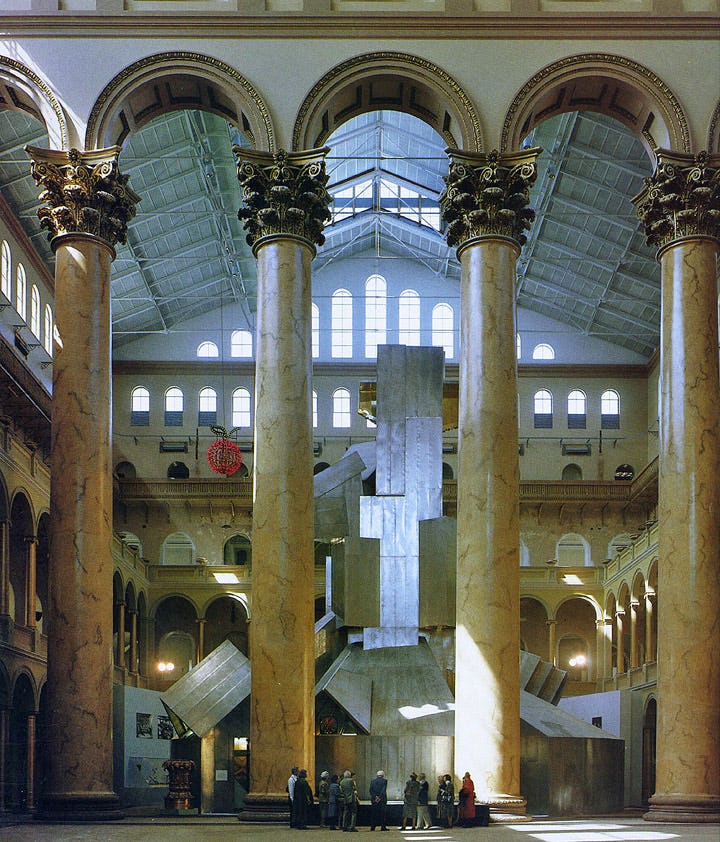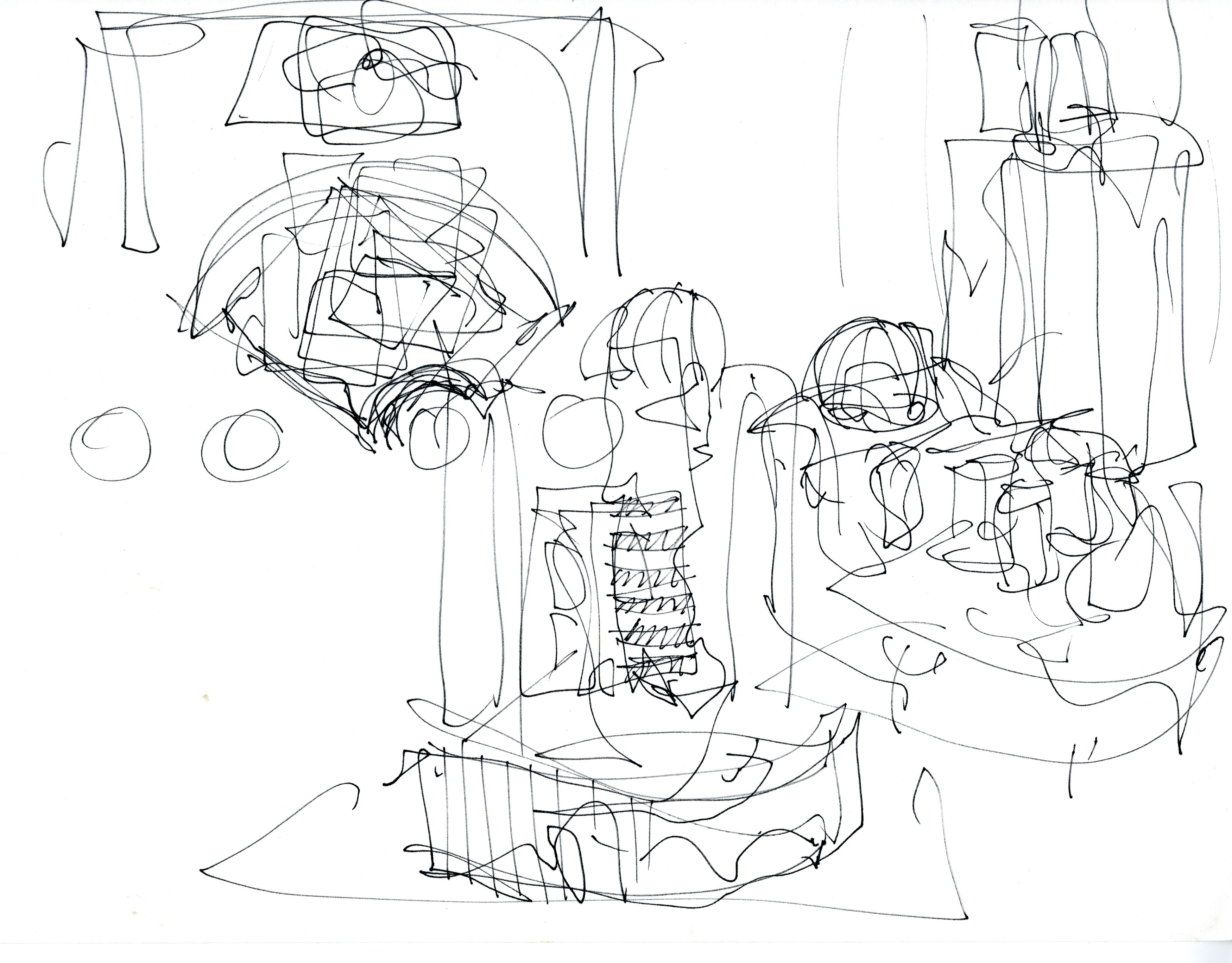By Nancy Bateman, Registrar

Since 2012, the Museum’s Summer Block Party has focused on the construction of a large showpiece in the Museum’s Great Hall. From the BEACH to this past summer’s Hive, these feats of engineering and imagination have showcased the designs of prominent architecture firms. However, these installations are not the first time we’ve created a grand spectacle for the public.
In 1988 the Museum presented Sheet Metal Craftsmanship: Progress in Building, an exhibition created inside of a Frank O. Gehry-designed pair of structures in the West Court of the Great Hall.
Standing over five stories high, the exhibition structures were designed to be a both a sculpture on a grand scale and to demonstrate the skill and ingenuity of union sheet metal workers and contractors.
It took nearly six hundred sheet metal journeymen over six weeks to build the structure. The exhibition itself celebrated the centennial of the Sheet Metal Workers’ International Association and featured information on the history of sheet metal as well as a demonstration workshop and displays of tools and sheet metal products.

The exhibition ran from January to August 1988, after which the structure was dismantled and the materials were recycled. Though the physical structure is gone, artifacts from the installation remain in the Museum’s permanent collection. Most importantly, we have Gehry’s original concept sketch for the structures and a model he built of the design. Constructed from foam core and held together with pins and glue, it was meant to be a working model, not a final presentation piece. However, even in its rough form you can see the elaborate design and genius behind the architecture.
The model is important as a historical record of both Gehry’s process and the Museum’s own history.
Architectural models built by the architects that designed them are some of the most sought after artifacts the Museum wishes to collect, but they also present their own challenges. These models were often built as temporary show pieces or working models, not meant to last longer than the construction project or perhaps no longer than a presentation to investors.
Consequently, the models are often constructed out of unstable materials and are frequently some of the most fragile and difficult to handle artifacts in our collection. For example, the glue on the Gehry model, which is now thirty years old, has become brittle and no longer holds the model together. Gehry reinforced the seams with metal pins, which are now the only thing holding the walls of the model in place. The Museum’s collections staff evaluates our models every five years to check their structural stability and to update plans for their long term preservation.
Through diligent care and advice from conservators we can preserve these showpieces for generations to come.

